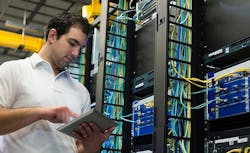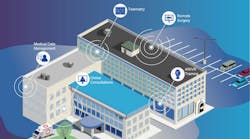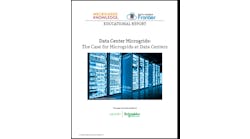In this Voices of the Industry column, Patrick Quirk, Vice President and General Manager of Management Systems at Vertiv, explores the connections between upskilled employees and the autonomous data center.
Patrick Quirk, Vice President and General Manager of Management Systems at Vertiv.
To say we’ve gone through a digital transformation over the last 10 years would be a significant understatement. Technology and mobility have turned our world upside down, from both the individual and enterprise perspective, impacting the amount and accessibility of information, as well as how we communicate and collaborate with one another.
At the same time, the Internet of Things (IoT) continues to expand each day, and big data keeps getting bigger, becoming more and more ingrained in our daily lives — whether we’re aware of it or not. Look to the heart – or brain – of this whole transformation, and you’ll find the data center keeping it all afloat.
Couple our ever-increasing reliance on data centers with the future workforce demographic shift facing IT and other industries around the world, and data centers have a lot to take into consideration in order to keep pace. Fortunately, by tapping into existing knowledge, connectivity and machine learning, data centers can undergo their own tech transformation to strengthen their future workforce and performance.
[clickToTweet tweet=”Patrick Quirk: Data centers can tap machine learning to equip their workforce. #datacenter #ai” quote=”Patrick Quirk: Data centers can tap machine learning to equip their workforce. #datacenter #ai”]
Use Data As A Guide
Workforce demographics are changing. In fact, it’s estimated that by 2018, 25 percent of the U.S. workforce will be 55 and older. These Baby Boomers, many of whom have worked for the same company for 20-plus years, are getting closer to retirement, and when they go, they’ll be taking their institutional knowledge with them. Industries and companies worldwide are facing this scenario, trying to minimize the current skills gap at play and more importantly, combat the even larger, more impactful skills gap that’s coming.
While this isn’t unique to this industry, data centers are in a great position to combat the inevitable learning curve with their own data that’s been acquired over time. Instead of expecting new employees to immediately fill the shoes of their experienced predecessors, data centers can equip new hires with past data to minimize, if not eliminate, the learning curve. With previous data, an individual can analyze past equipment performance as well as vendor performance history, quality, etc., and walk into any scenario with at least a few pieces of the puzzle already in place.
Leverage Connectivity
Connecting the above data across devices can yield even greater results. In many of today’s data centers, when a problem arises, it typically prompts an alert that lacks context and requires an in-person diagnosis and resolution. What’s more, any intel gained during the process also must be recorded manually. This hands-on process can prove to be problematic for a number of reasons, most notably data center location and staff proximity. Not to mention, if the technician fails to complete the last step, key learnings to improve future performance are lost.
[clickToTweet tweet=”Patrick Quirk: Utilize the power of the cloud and data to create intelligent alerts. #datacenter” quote=”Patrick Quirk: Utilize the power of the cloud and data to create intelligent alerts. #datacenter”]
Utilize the power of the cloud, and this situation can look very different. A problem arises and triggers the delivery of a notification to an automated network operations center (NOC) or control room. The NOC disseminates the user and role specific information to the right people, providing any available additional context, information on root causes, and in some cases even a diagnosis before anyone sets foot on-site. NOC personnel can guide on-site staff through the proper resolution and repair via Google Glass, Microsoft Hololens or other another augmented reality system. Lastly, to close the loop on the entire process, all data tied to each step of the procedure, including changes and/or feedback, is synchronized to the knowledge base in the cloud to further refine and improve future outcomes.
Not only does the second scenario expedite service and further minimize required workforce training, it automatically captures information that can be used in future monitoring and troubleshooting. These steps also move us toward an autonomous data center.
Connect the Dots
Data center providers can broaden this knowledge base even further to provide greater insights. Through the cloud, data center providers can aggregate, anonymize and analyze data from various deployments around the world and, in-turn, provide learnings from the industry as a whole.
As this wealth of knowledge builds, it will yield not only more efficient diagnostics and resolutions, but also smarter, proactive notifications based on data collected from a broad spectrum of customers and models. From proactive notifications on maintenance predictions to energy-saving recommendations, data centers will be able to utilize these global insights to reduce maintenance trips and associated risk, and downtime.
The shift in workforce demographics is only a few years away, and data centers that deploy these types of systems now will be better prepared for the knowledge drain. By combining data, connectivity and machine learning, data centers can bridge the skills gap, prepare for changing environments and loads, and eventually implement predictive capabilities.
Patrick Quirk is Vice President and General Manager of Management Systems for Vertiv.





